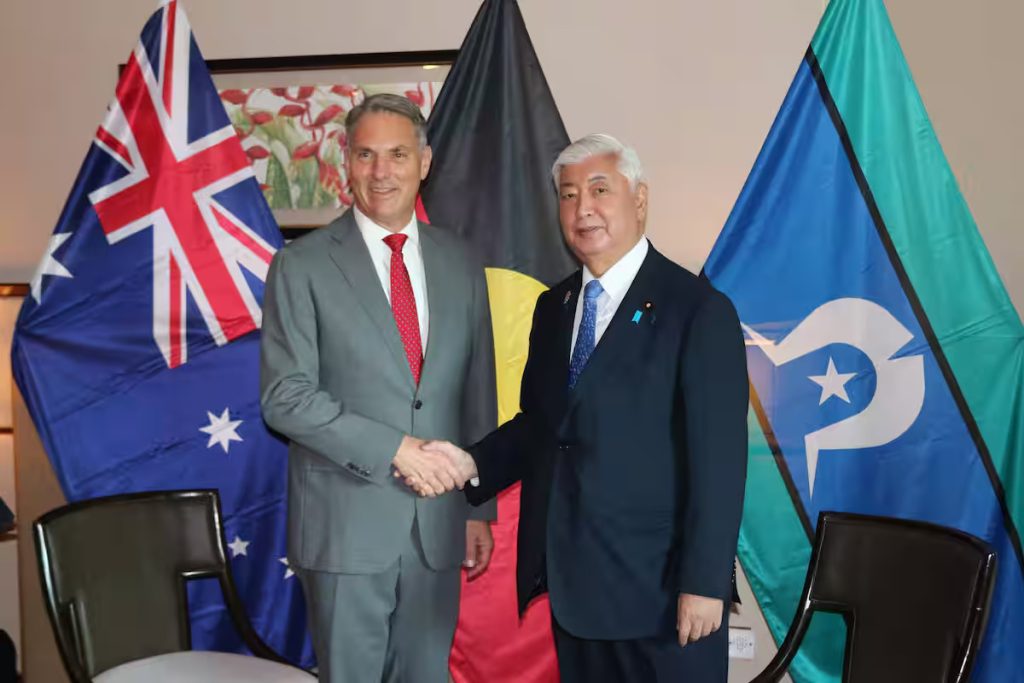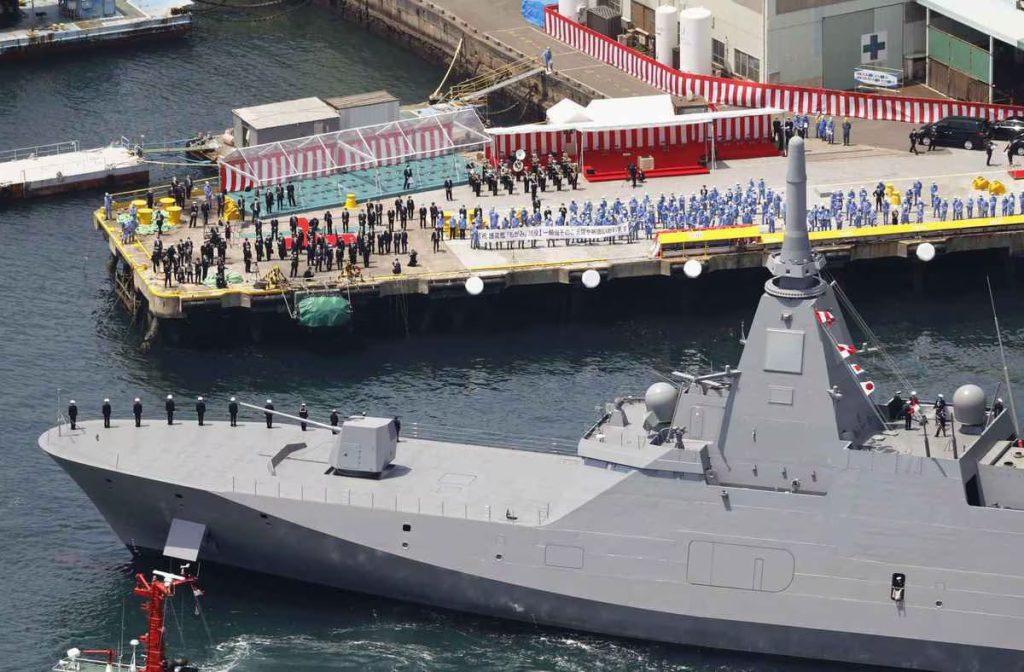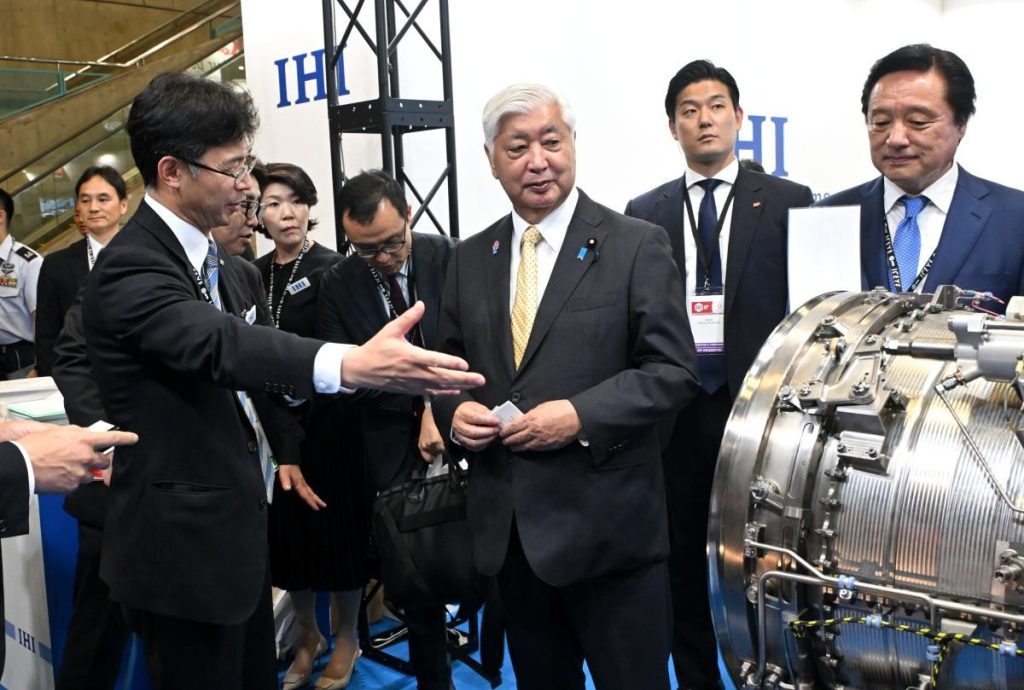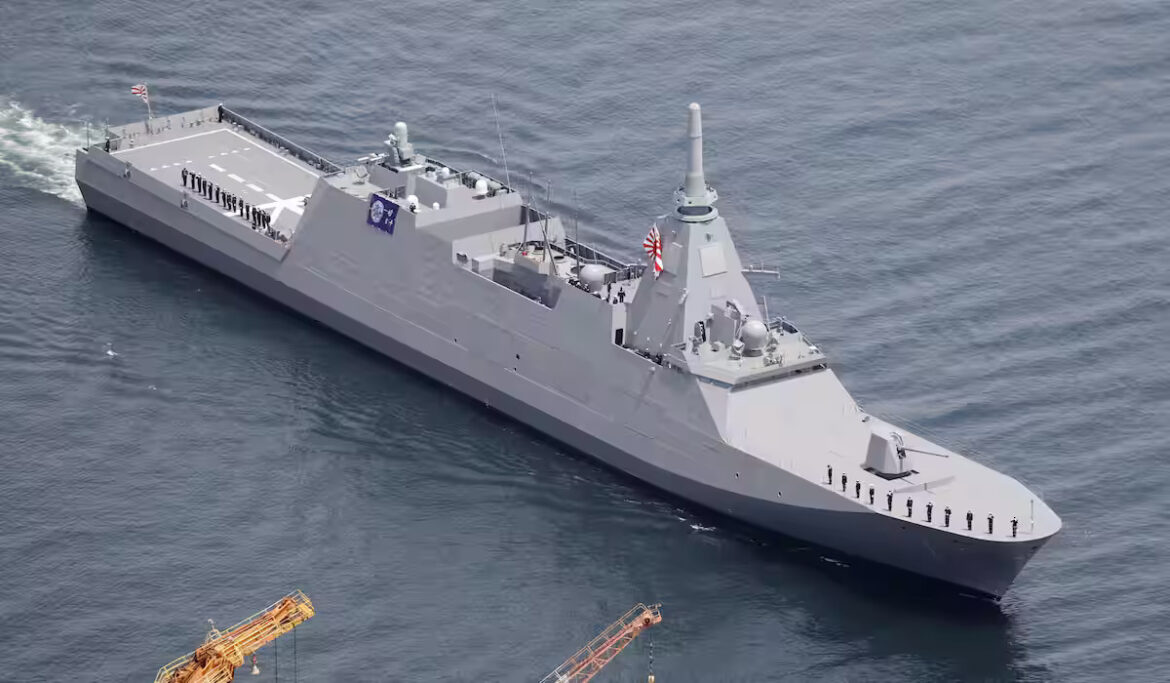In a landmark deal with Japan, the Australian government announced on July 5 that it had selected a Japanese-designed frigate for its navy’s next-generation warship program.
Worth up to $10 billion AUD (about $6.5 billion USD), the contract marks Japan’s largest defense export to date and a strategic breakthrough in its bid to become a key player in the global arms market.
Australia plans to procure 11 of the new frigates, based on an upgraded version of the Japanese Mogami-class vessel currently in service with the Japan Maritime Self-Defense Force. The first three ships will be constructed in Japan, with the remainder built domestically in Australia.
Deliveries are expected to begin in 2029, with final contracts to be signed early next year.
The Winning Design
The decision was initially conveyed on Monday evening (July 4) during a video conference between Japanese Defense Minister Gen Nakatani and his Australian counterpart Richard Marles.
Marles praised the Mitsubishi Heavy Industries’ Mogami-class as “absolutely the best ship” for Australia’s needs. The frigate’s stealth capabilities and operational efficiency, which require fewer crew members, reportedly gave Japan the edge over its German competitor.
 Japanese Defense Minister Gen Nakatani (right) meets with Australian Defense Minister Richard Marles on the sidelines of a defense forum in Singapore. (©Sankei by Shusuke Takenouchi)
Japanese Defense Minister Gen Nakatani (right) meets with Australian Defense Minister Richard Marles on the sidelines of a defense forum in Singapore. (©Sankei by Shusuke Takenouchi)
Experts say using the same vessel type also allows for greater interoperability through shared maintenance hubs amid a rapidly evolving maritime environment.
Prime Minister Shigeru Ishiba welcomed the announcement, calling it “a milestone for Japan’s defense industry” on his X account and pledging full government and industry cooperation in the run-up to the formal signing.
Years in the Making
For Tokyo, the victory is especially sweet — and hard-won. In 2016, Japan suffered a high-profile defeat in a similar Australian tender when its Soryu-class submarine lost out to a French proposal.
That failure, along with other missed export opportunities, including the US-2 amphibious aircraft to India and the P-1 patrol aircraft to the United Kingdom, had cemented Japan’s reputation as a technologically advanced but commercially clumsy arms supplier.
 Defense ministers from Japan, the US, Australia, and the Philippines attend the meeting. May 31, Singapore (©Sankei by Shusuke Takenouchi)
Defense ministers from Japan, the US, Australia, and the Philippines attend the meeting. May 31, Singapore (©Sankei by Shusuke Takenouchi)
This time, Tokyo took a radically different approach.
In late 2024, the government established a joint public-private task force to push the proposal aggressively. Senior officials made repeated trips to Canberra, emphasizing not only the technical advantages of the New FFM (Future Multi-mission Frigate) but also Tokyo’s commitment to defense partnership.
 Bold Offer and Policy Shift
Bold Offer and Policy Shift
Behind closed doors, the Japanese side is said to have offered a bold incentive. If selected, it would prioritize Australia’s delivery schedule over its own, even delaying procurement for the Japanese navy.
The Japan Maritime Self-Defense Force had earlier announced plans to procure 12 of the New FFM vessels.
According to local news in Australia, this offer is what “tipped the scales in Japan’s favor.” TKMS, the German competitor, had been widely seen as a strong contender until the final stages of deliberation.
 Officials see off JS Mogami, the first ship of the Mogami class, as it departs at 11:48 AM on April 28, 2022, in Nagasaki City. (©Kyodo)
Officials see off JS Mogami, the first ship of the Mogami class, as it departs at 11:48 AM on April 28, 2022, in Nagasaki City. (©Kyodo)
In a separate but critical development, Japan’s National Security Council in November 2024 approved participating in Australia’s frigate program under its Three Principles on Transfer of Defense Equipment and Technology.
While the rules typically ban exports of lethal weapons, they permit transfers tied to joint development or production.
Breaking Through
Until recently, Japanese defense officials had often lamented the country’s lack of progress in the international arms market. Bureaucratic inertia, legal constraints, and a limited track record had kept Japan on the sidelines despite its advanced hardware.
Australia’s decision marks the second time Japan has exported a finished defense system. The first was the export of J/FPS-3ME air surveillance radar systems to the Philippines, under a 2020 agreement aimed at strengthening bilateral security cooperation.
 Defense Minister Gen Nakatani tours the DSEI Japan exhibition on May 21. (©Hidemitsu Kaito)
Defense Minister Gen Nakatani tours the DSEI Japan exhibition on May 21. (©Hidemitsu Kaito)
If the warships are delivered on time and perform as expected, the agreement could unlock future export opportunities for Japan. Among them is Japan’s next-generation fighter jet, currently being co-developed with the UK and Italy.
For Tokyo, the implications go beyond defense industry economics. The latest deal strengthens security ties with a key regional partner at a time of intensifying competition in the Indo-Pacific, particularly with China’s growing maritime assertiveness.
 RELATED:
RELATED:
Continue Reading


AloJapan.com